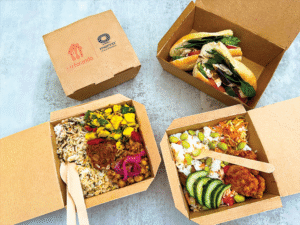Nanoscale plastic particles can reach unborn babies through food and water a mother ingests, according to a new Rutgers study.
Plastic particles, chipped off from billions of tons of plastic exposed to the elements, have mixed in with the food we eat, water we drink and air we breathe, so much so that it’s thought each person ingest a credit card’s worth each week.
Now researchers have studied five pregnant rats and found that plastic particles can permeate their placentas and reach their unborn children, potentially harming foetal development.
Particles were found to permeate through to the livers, kidneys, hearts, lungs and brain of their offspring and the research team believe the process is the same in humans.
‘The use of plastics has exploded since the 1940s due to their low cost and versatile properties. From 9 billion metric tons produced over the last 60 years, 80 percent ended up in the environment, and only 10 percent were recycled,’ said Phillip Demokritou, the Henry Rutgers Chair and professor in nanoscience and environmental bioengineering at the Rutgers School of Public Health.
‘Petroleum-based plastics are not biodegradable, but weathering and photooxidation break them tiny fragments. These tiny fragments, called micro-nano-plastics, are found in human lungs, placentas and blood, raising human health concerns. As public health researchers, we are trying to assess the health risks from such an emerging contaminant to inform policymakers and develop mitigation strategies. The goal is also to increase the reuse and recycling of plastics and even replace them with biodegradable, biopolymer-based plastics. This is part of our bigger societal goal towards sustainability.’
Future research will focus on how these different types of plastic cross cell barriers, how the size of the particles affects the process and what impact they have on foetal development.
So far, feeding pregnant lab animals nanoscale particles has been shown to restrict the growth of their offspring and to harm the development of their brains, livers, testicles, immune systems and metabolisms.
While some studies have found that plastics affect human embryonic development, it remains to be seen whether the nanoscale plastics unavoidably ingested by pregnant huamns will result in the same effects.
Photo by Anastasiia Chepinska















